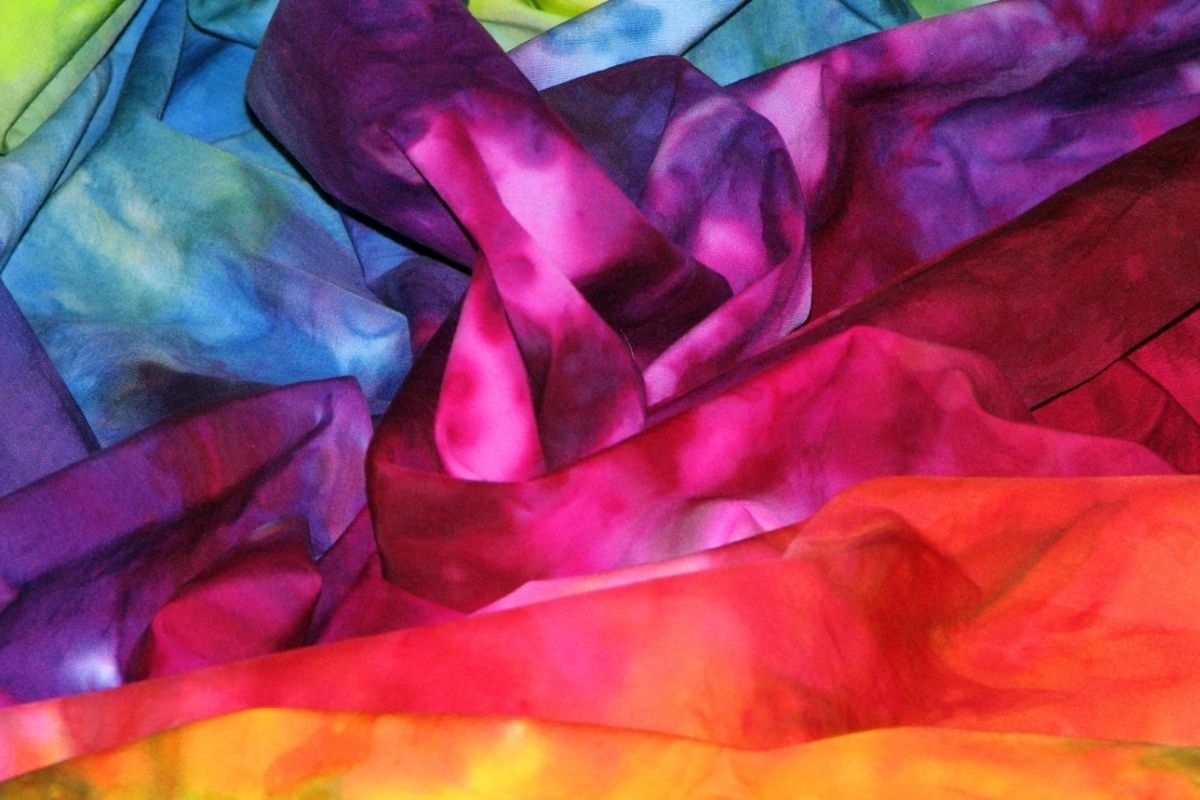
Dyeing has been an essential part of human culture for thousands of years. From ancient civilizations to modern fashion, the process of adding color to fabric has evolved dramatically. Did you know that the earliest known dyed fibers date back to around 34,000 years ago? Natural dyes from plants, insects, and minerals were the primary sources before synthetic dyes took over in the 19th century. Today, dyeing is not just about aesthetics; it also involves science, sustainability, and innovation. Whether you're a history buff, a fashion enthusiast, or someone curious about the chemistry behind colors, these 35 facts about dyeing will enlighten and surprise you. Buckle up for a colorful journey through time and technology!
The History of Dyeing
Dyeing has been a part of human culture for thousands of years. From ancient civilizations to modern times, the process of adding color to textiles has evolved significantly.
- Ancient Egyptians used natural dyes from plants and insects to color their fabrics. They were among the first to develop dyeing techniques.
- Indigo dye has been used for over 4,000 years. It was highly prized in ancient India, China, and Egypt.
- Tyrian purple, a dye made from sea snails, was so valuable in ancient Rome that it was reserved for royalty.
- Madder plant roots were used to produce red dye in ancient Greece and Rome.
- Woad, a plant-based dye, was used by ancient Britons to paint their bodies blue for battle.
Natural vs. Synthetic Dyes
Natural dyes come from plants, animals, and minerals, while synthetic dyes are man-made. Both have their pros and cons.
- Natural dyes are biodegradable and eco-friendly, making them a sustainable choice.
- Synthetic dyes offer a wider range of colors and are more colorfast than natural dyes.
- Cochineal insects produce a vibrant red dye called carmine, used in cosmetics and food coloring.
- Logwood produces a rich black dye, historically used for ink and fabric dyeing.
- Synthetic indigo was developed in the late 19th century, revolutionizing the textile industry.
Dyeing Techniques
Various techniques have been developed to apply dyes to fabrics, each creating unique patterns and effects.
- Tie-dyeing involves tying sections of fabric before dyeing to create patterns. It became popular in the 1960s.
- Batik is a traditional Indonesian technique using wax to create intricate designs on fabric.
- Shibori is a Japanese method of resist dyeing, involving folding, twisting, or bunching fabric before dyeing.
- Ikat involves dyeing threads before weaving them into fabric, creating blurred patterns.
- Dip dyeing creates a gradient effect by dipping fabric into dye and gradually removing it.
Modern Dyeing Innovations
Advancements in technology have led to new dyeing methods that are more efficient and environmentally friendly.
- Digital printing allows for precise, detailed designs to be printed directly onto fabric.
- Air dyeing uses air instead of water to apply dye, reducing water consumption by up to 95%.
- Reactive dyes form a chemical bond with fibers, resulting in vibrant, long-lasting colors.
- Natural indigo vats have been revived by artisans seeking sustainable dyeing methods.
- Low-impact dyes are designed to minimize environmental impact, using less water and energy.
Environmental Impact of Dyeing
The dyeing industry has a significant environmental footprint, but efforts are being made to reduce its impact.
- Textile dyeing is the second-largest polluter of water globally, after agriculture.
- Microplastics from synthetic dyes can end up in oceans, harming marine life.
- Eco-friendly dyes are being developed to reduce pollution and waste.
- Waterless dyeing technologies aim to eliminate water use in the dyeing process.
- Natural dyeing workshops are promoting traditional, sustainable dyeing practices.
Fun Facts About Dyeing
Dyeing isn't just about textiles; it has interesting applications and trivia worth noting.
- Easter eggs are often dyed using natural dyes like onion skins and beet juice.
- Food coloring uses many of the same dyes as textiles, though in different concentrations.
- Hair dyeing dates back to ancient Egypt, where henna was used to color hair.
- Color psychology studies how different colors affect human emotions and behavior.
- Dyeing Easter eggs with natural dyes can create unique, earthy colors.
Dyeing in Popular Culture
Dyeing has made its mark in various aspects of popular culture, from fashion to art.
- Tie-dye became a symbol of the counterculture movement in the 1960s.
- Denim jeans owe their iconic blue color to indigo dye.
- Costume designers often use dyeing techniques to create unique looks for films and theater.
- Art installations sometimes incorporate dyed fabrics to create immersive experiences.
- Fashion designers experiment with dyeing techniques to create innovative, one-of-a-kind pieces.
The Final Brushstroke
Dyeing has a rich history and a vibrant present. From ancient techniques using natural dyes to modern synthetic methods, the art of adding color to textiles has evolved dramatically. Understanding the origins and processes behind dyeing can deepen your appreciation for the clothes you wear every day. Whether you're fascinated by the chemistry of synthetic dyes or the sustainability of natural ones, there's always something new to learn.
Remember, dyeing isn't just about fashion; it's a blend of science, art, and culture. Next time you see a beautifully dyed fabric, think about the journey it took to get there. Dive into the world of dyeing, experiment with colors, and maybe even try your hand at creating your own unique pieces. The world of dyeing is as colorful as the fabrics it produces. Happy dyeing!
Was this page helpful?
Our commitment to delivering trustworthy and engaging content is at the heart of what we do. Each fact on our site is contributed by real users like you, bringing a wealth of diverse insights and information. To ensure the highest standards of accuracy and reliability, our dedicated editors meticulously review each submission. This process guarantees that the facts we share are not only fascinating but also credible. Trust in our commitment to quality and authenticity as you explore and learn with us.
